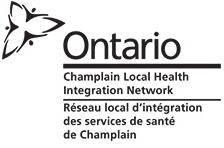
Are my children at risk of lead exposure?
Are your children:
- Living in or regularly visiting a house or day care center built before 1950?
- Living in or regularly visiting a house built before 1978 with peeling or chipping paint or recent (within the last 6 months), ongoing or planned renovation?
- Living with or regularly visiting a sibling, housemate or playmate with lead poisoning?
- Living with an adult whose job or hobby involves exposure to lead?
- Living near an active lead smelter, battery recycling plant, or other industry likely to release lead?
- Recent refugee, immigrant, or child adopted from outside Canada or the USA?
If you answered yes to any of the previous questions, your children may be at risk of lead exposure. Read on to learn more, and speak with your health providers...
Source: Guidelines for Childhood Lead Poisoning Screening in Virginia, Virginia Department of Health Statewide Screening Plan Work Group, following CDC Guidelines and Virginia Regulations.
What is lead?
Lead is a poisonous metal found naturally in small amounts in soil. Humans have long mined and used lead, but this increased significantly in the 20th century. It is estimated that between 1920-2000, millions of tons of lead were mined, and used in many products in and around homes, paint, gasoline, and other substances.
What is lead poisoning?
Although lead can be useful, unfortunately it was eventually discovered that lead is actually poisonous, and causes various problems in the human body.
Fortunately, due to the realization that lead is poisonous, governments have significantly restricted the use of lead in products. As a result, children and adults nowadays are exposed to smaller amounts of lead than in the past.
Between 1976-1980, 88% of children in the USA had harmful levels of lead. Thanks to steps such as banning use of lead in things such as gasoline and paint, by 2000, only 2.2% of US children have harmful levels of lead (National Institute of Environmental Health Sciences, USA). This is much better, this still means that one in 50 children have harmful levels of lead!
Why is lead still a problem?
Lead lasts a long time in the environment, and although there is no more lead released from burning leaded gasoline, people can still be exposed to it in other ways such as:
- Lead-based paint: Homes built before 1978 were painted with lead paint, and many outdoor structures are still painted with lead paint. Over time, paint will wear down, chip and release lead dust into the air. Lead paint in older housing remains the most common source of lead exposure for children in the United States.
- Contaminated soil and air: Lead dust is still present in the air from contaminated soil that is blown in the wind. Because lead was widely used in gasoline starting in 1923, millions of tons of lead were released into the environment in car exhaust. The soil around your home can pick up lead from sources such as exterior paint.
- Contaminated water and food: Lead can contaminate food if you use old lead containing products such as cookware, tin cans, pottery, and glassware. Lead can enter your drinking water through your plumbing, e.g. if the water has flowed through lead pipes or fittings.
- Lead crystal, lead-glazed pottery, and some inexpensive metal jewelry.
- Workplace exposure: Adults can become contaminated if they work in industries that still use lead. Lead exposures can occur in activities such as welding, renovation and remodeling, smelters, firing ranges, the manufacture and disposal of car batteries, and the maintenance and repair of bridges and water towers.
How does lead get into the body?
Lead can enter the body in two main ways. It can be 1) inhaled via lead dust in the air, or 2) ingested by eating or drinking food or water that contains lead.
Once inside the body, it goes into the blood, and from there, can be absorbed into the brain, nerves, heart, muscles, and in particular, bones and teeth. Once in the bones and teeth, the lead can stay in the body for decades. Over time, some of the stored lead can leave the bones, reenter the bloodstream, and travel to organs again, where it can affect health. Lead slowly leaves the body in urine and feces.
How does lead damage people's health?
Lead can cause various problems, including:
- Problems with the brain, such as problems with attention, memory and behaviour. Lead can cause symptoms that can make a person appear as if they have other brain conditions such as learning problems, attention deficit / hyperactivity disorder.
- Brain damage and death
- Anemia, a condition where you have a lack of blood
- Stomachaches
- Kidney damage
- Muscle weakness
- Increased blood pressure
The problems that any particular person gets will depend on factors such as their age, the amount of exposure and other factors.
Effects of Lead in Children
Lead is particularly damaging to young children, because their brains and bodies are still developing.
Furthermore, young children (in particular, two year olds) tend to have the highest levels of lead in their blood, because they like putting things into their mouths, such as toys, paint chips or other products that may have lead.
Studies have shown that children exposed to even low amounts of lead have lower IQ scores in children.
Effects of Lead in Adults
Lead can cause problems including, but not limited to:
- Increased blood pressure
- Fertility problems
- Nerve disorders
- Muscle and joint pain,
- Irritability, mood problems,
- Memory or concentration problems.
Adults need a larger amount of exposure than children to be have adverse health effects.
What can be done about lead exposure and lead poisoning?
There are medications that can remove lead from the body, but unfortunately they do not reverse any damage that was already caused by the lead.
Thus, the best option is to prevent lead poisoning from happening in the first place.
Nowadays, the biggest source of lead poisoning in children is dust and chips from deteriorating lead paint on interior surfaces.
The following recommendations are from the Center for Disease Control ( http://www.cdc.gov/nceh/lead/tips.htm):
Reduce exposure to lead from lead paint and lead in dust and soil:
- Make sure your child does not have access to peeling paint or chewable surfaces painted with lead-based paint.
- Pregnant women and children should not be present in housing built before 1978 that is undergoing renovation. They should not participate in activities that disturb old paint or in cleaning up paint debris after work is completed.
- Create barriers between living/play areas and lead sources. Until environmental clean-up is completed, parents should clean and isolate all sources of lead. They should close and lock doors to keep children away from chipping or peeling paint on walls. You can also apply temporary barriers such as contact paper or duct tape, to cover holes in walls or to block children’s access to other sources of lead.
- Regularly wash children’s hands and toys. Hands and toys can become contaminated from household dust or exterior soil. Both are known lead sources.
- Regularly wet-mop floors and wet-wipe window components. Because household dust is a major source of lead, parents should wet-mop floors and wet-wipe horizontal surfaces every 2-3 weeks. Windowsills and wells can contain high levels of leaded dust. They should be kept clean. If feasible, windows should be shut to prevent abrasion of painted surfaces or opened from the top sash.
- Prevent children from playing in bare soil; if possible, provide them with sandboxes. Parents should plant grass on areas of bare soil or cover the soil with grass seed, mulch, or wood chips, if possible. Until the bare soil is covered, parents should move play areas away from bare soil and away from the sides of the house. If using a sandbox, parents should also cover the box when not in use to prevent cats from using it as a litter box. That will help protect children from exposure to animal waste.
To further reduce a child’s exposure from other sources of lead:
- Avoid using traditional home remedies and cosmetics that may contain lead;
- Avoid eating candies imported from Mexico;
- Avoid using containers, cookware, or tableware to store or cook foods or liquids that are not shown to be lead free;
- Remove recalled toys and toy jewelry immediately from children. Check Lead Recalls lists.
- Use only cold water from the tap for drinking, cooking, and for making baby formula (Hot water is more likely to contain higher levels of lead. Most of the lead in household water usually comes from the plumbing in your house, not from the local water supply.);
- Shower and change clothes after finishing a task that involves working with lead-based products such as stain glass work, bullet making, or using a firing range.
For More Information
Agency for Toxic Substances and Disease Registry Division of Toxicology 1600 Clifton Road NE, Mailstop E-29 Atlanta, GA 30333 Information line: 1-888-42-ATSDR (1-888-422-8737) Web address:
http://www.atsdr.cdc.gov/toxpr... tp13.htm
Centers for Disease Control and Prevention
1600 Clifton Rd. Atlanta, GA 30333 Information Line: 1-800-311-3435 Web Address:
http://www.cdc.gov/nceh/lead/lead.htm

















